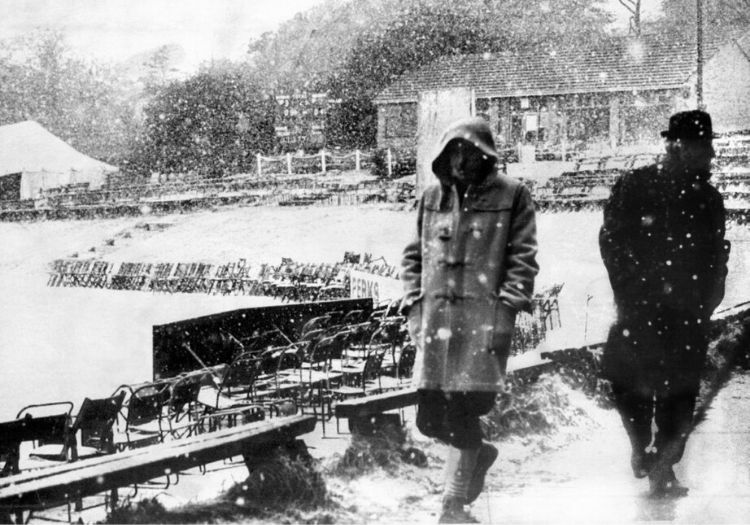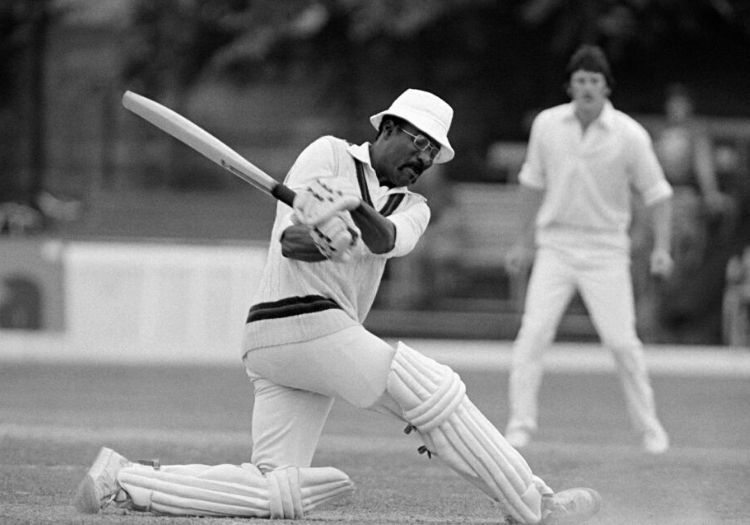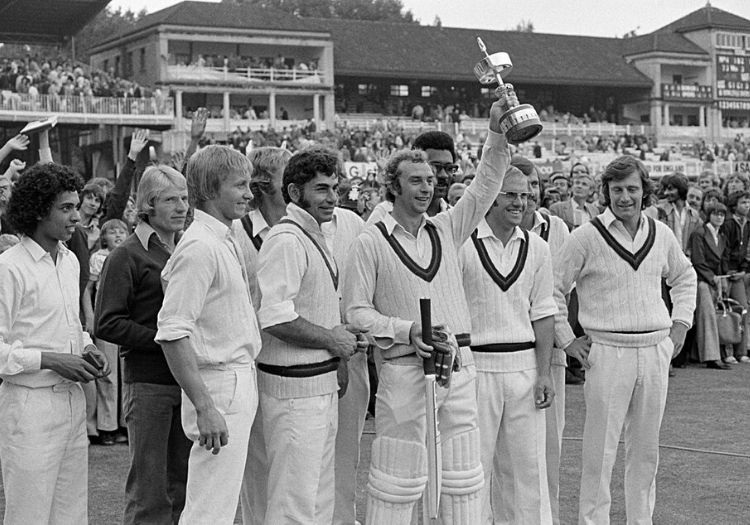PAUL EDWARDS: Everyone cares who wins a cricket match; otherwise there would be no point in keeping the score. But experience often transcends outcome

It was something of a jolt this week when I realised it’s nearly 45 years since I bought my English Literature teacher a pint. Now before any colleagues have a pop it’s as well to make it clear that I have actually stood a drink or two for people in the intervening period; the slight shock stemmed rather from my recognition of time’s deeper passing, particularly so in the midst of weeks when many people have pressed the pause button on their lives.
Even more powerfully, though, I was drawn back to the occasion of my largesse: Derbyshire’s match against Lancashire at Buxton in 1975 and, in particular, Clive Lloyd’s 167 not out on the first day of that famous game.
Let it be stated clearly that Andy Mayne deserved much more than a pint. He had steered us through two plays by Shakespeare, one by Marlowe, poems by Byron, Pope and John Donne, and novels by D H Lawrence and Joseph Conrad. Admittedly we were a pretty studious bunch – geeks, we’d be called today – but Andy managed everything without once raising his voice. He was one of those teachers who never needed to do so.
Clive Lloyd often batted without raising his voice, too. There was the sharp crack of the bat on the ball but everything else was ease and grace. His movement into perfect position was so lissom one could believe his limbs contained ball-bearings rather than joints. Then there was a liquid swing of the bat and the ball disappeared deep into the woods adjoining the small outground.
Lloyd overshadowed everyone that afternoon, even Frank Hayes, who was hardly a grinder and also made a century in Lancashire’s 477 for five in the 100 overs teams were allotted in those days. Derbyshire’s spinners, Fred Swarbrook and Geoff Miller, went at six-an-over but may have got off lightly. The home side were two down at the close.
You probably all know what happened on the Monday of that game. It snowed. There was only an inch of the stuff in Buxton but it was June 2 and the meteorologists moved into Arctic overdrive. The photographers enjoyed themselves, the headline writers, too, and the day supplied enough material for a recent Radio 4 feature. I was back in Manchester when winter returned to Buxton but a good friend of mine, Andrew Knowles, was working on the ground when the snow arrived.
“My most personal recollection is of us all having our picture taken in what could only be described as blizzard conditions,” he wrote earlier this week. “The following Saturday, I was playing at the Park and the weather was fantastic. The same photographer appeared and took another photo of a group of the players sitting on the bank below the Pavillion, some with shirts off. Both photos appeared on the front page of Monday's edition of the Mail under a Last Week-This Week caption.”

Lloyd made an unbeaten 167 in Lancashire's 477 for 5
By the time Andrew was playing cricket once more – he was a seriously good seam bowler – Lloyd was playing for the West Indies in the first World Cup and Derbyshire’s cricketers were taking on Somerset at Bath. Cricket’s caravans had moved on, just as they would be doing today were this a normal summer. Bob Taylor and his players were probably trying to expunge the memory of the Lancashire game from their minds and you saw their point.
Conditions on the third morning had improved to such a degree that Dickie Bird – it had to be Dickie – ruled play could start on time. Derbyshire lost 18 wickets for 104 runs on a wicket that was first cousin to unplayable. These were still the days of uncovered pitches. The day gave rise to many stories and most have become folklore.
What gave that game a particular attraction to me was that it was played on an outground. Would the papers have been as interested had the snow fallen at Old Trafford? Perhaps. A Lloyd century would adorn the humblest rec. But there was, and is, a tremendous thrill about seeing the best cricketers in the world perform in environments also used by those who play purely for the love of the thing. (No doubt Cristiano Ronaldo would get a comparable buzz if he turned out for Hesketh Casuals now and then.)
That summer was full of rich delights for Derbyshire supporters who liked their outground matches. The county used six venues for championship cricket and nine in all, including two in Burton upon Trent, the Allied Breweries and Bass-Worthington grounds. (Mind you, the Rechabites were never particularly strong in Staffordshire.)
The county’s willingness to take games beyond its boundaries was mirrored last summer when Lancashire played a game at Sedbergh and I’ve often thought it would be a good initiative were Worcestershire to play a single match in Shropshire or Somerset in Devon. Both are rich recruiting grounds for those first-class clubs.
The problem, of course, is money, and the shortage of it ensured that Derbyshire’s experiment in 1975 was short-lived. But it is tempting to ponder the effect on young minds of watching Alan Knott at Chesterfield, Alvin Kallicharran at Burton or Graham Gooch at Ilkeston. Such experiences cannot be easily converted into pounds and pence but all these glories were possible that summer.
And as if to reinforce cricket’s capacity for contrast, Clive Lloyd made another century precisely three weeks after his effort at Buxton. This time, however, it was a capacity crowd at Lord’s who were treated to his mastery and the occasion was the World Cup Final. There were a few more people in St John’s Wood than there had been at The Park but they did not care any more deeply about their cricket.

Lloyd was a central figure for Lancashire as an overseas player
That season of rich wonders ended with another echo of a grand occasion in a humbler setting. Derbyshire had decided to take their last home match in the John Player League to Darley Dale on the edge of the Peak District and I still wonder if they’d have made the same decision had they known the occasion would be televised and that the match would decide the title. Hampshire arrived needing only a victory to bag the trophy and they achieved this in some ease after Barry Richards and Gordon Greenidge put on a rapid 90 for the first wicket.
Darley Dale is smaller than Buxton and there were times when two of the world’s best batsmen were competing to see who could be the first to hit the ball over the River Derwent. Spectators said Richards won the private contest in one of cricket’s most pastoral settings and most in the 6000 crowd went home happy. Less than three months earlier Greenidge had also played in the World Cup Final.
Everyone cares who wins a cricket match; otherwise there would be no point in keeping the score. But experience often transcends outcome. Those games at Buxton and Darley Dale seem almost stolen from fiction and recollection of them touches the heart in an era when some counties are still loath to use their outgrounds and in a week when no one knows when the next county cricket of any description will be played. Then Swarbrook gets his line wrong to Lloyd and the ball soars into terminal disappearance. I take a circuit of the ground and amble into the beer tent.
Yes, I know; it’s images again: Lloyd at Buxton, Richards at Darley Dale, Asif Iqbal at Maidstone, Chris Tavaré in The Parks. Something of all this is captured in Thomas Moult’s poem “The Names”. It begins as follows:
There’s music in the names I used to know,
And magic when I heard them long ago.
“Is Tyldesley batting?” Ah, the wonder still!
Though he would shrug such an idea aside as absurd hyperbole there was magic and wonder in Andy Mayne’s work, too. Or, at least, there was for one of his pupils.
Save 30% when you subscribe to The Cricketer’s print & digital bundle. £35 for 12 issues